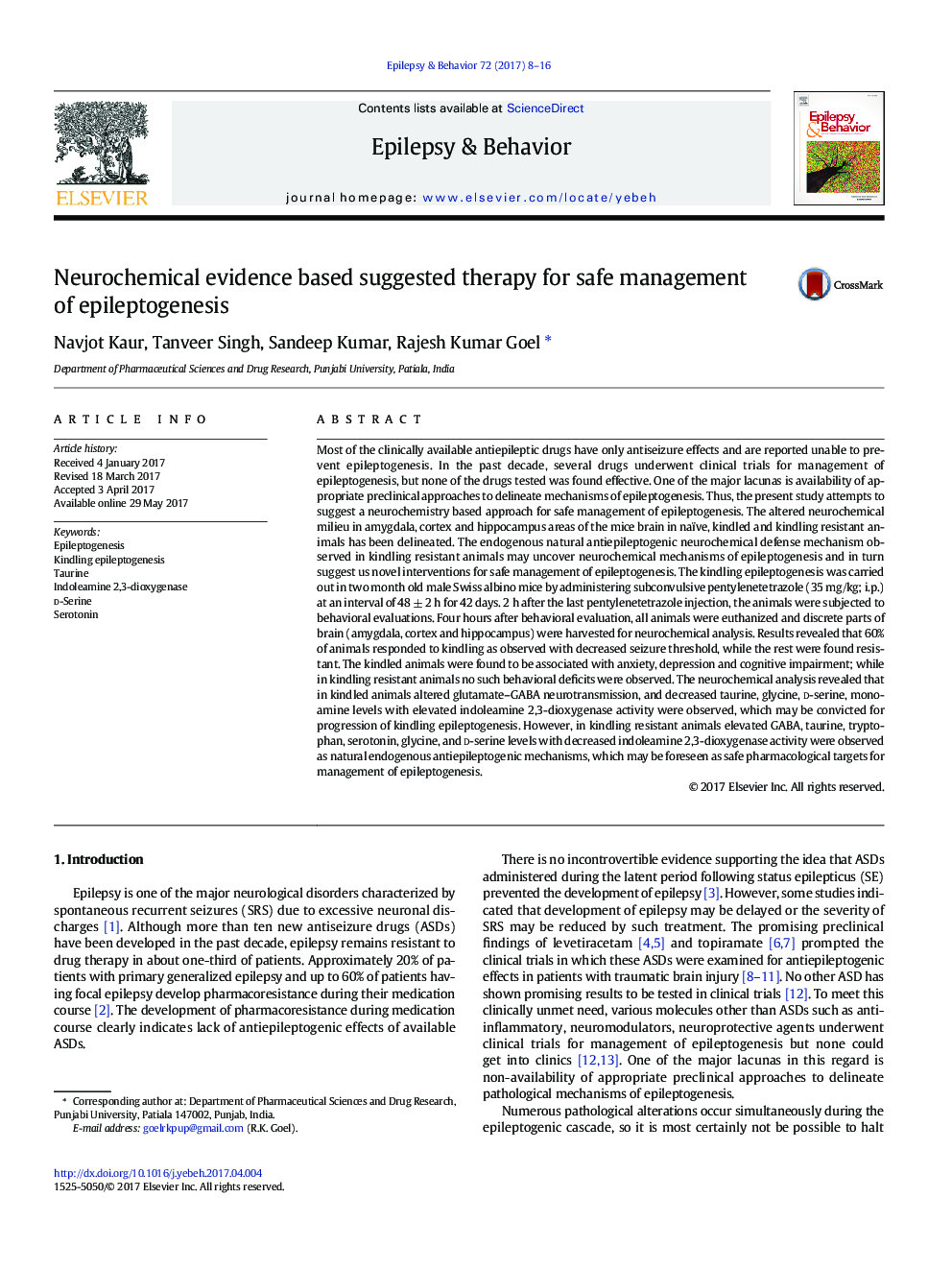| کد مقاله | کد نشریه | سال انتشار | مقاله انگلیسی | نسخه تمام متن |
|---|---|---|---|---|
| 5628241 | 1579821 | 2017 | 9 صفحه PDF | دانلود رایگان |
- Altered neurochemistry was estimated in amygdala, cortex and hippocampus of naïve, kindled and kindling resistant animals.
- Decreased GABA, glutamate, taurine, serine, glycine, monoamines and elevated IDO have been observed in kindled animals.
- Elevated GABA, taurine, serine, glycine levels with decreased IDO have been observed in kindling resistant animals.
- These natural endogenous antiepileptogenic mechanisms may be suggested for safe antiepileptogenic agent in clinics.
Most of the clinically available antiepileptic drugs have only antiseizure effects and are reported unable to prevent epileptogenesis. In the past decade, several drugs underwent clinical trials for management of epileptogenesis, but none of the drugs tested was found effective. One of the major lacunas is availability of appropriate preclinical approaches to delineate mechanisms of epileptogenesis. Thus, the present study attempts to suggest a neurochemistry based approach for safe management of epileptogenesis. The altered neurochemical milieu in amygdala, cortex and hippocampus areas of the mice brain in naïve, kindled and kindling resistant animals has been delineated. The endogenous natural antiepileptogenic neurochemical defense mechanism observed in kindling resistant animals may uncover neurochemical mechanisms of epileptogenesis and in turn suggest us novel interventions for safe management of epileptogenesis. The kindling epileptogenesis was carried out in two month old male Swiss albino mice by administering subconvulsive pentylenetetrazole (35 mg/kg; i.p.) at an interval of 48 ± 2 h for 42 days. 2 h after the last pentylenetetrazole injection, the animals were subjected to behavioral evaluations. Four hours after behavioral evaluation, all animals were euthanized and discrete parts of brain (amygdala, cortex and hippocampus) were harvested for neurochemical analysis. Results revealed that 60% of animals responded to kindling as observed with decreased seizure threshold, while the rest were found resistant. The kindled animals were found to be associated with anxiety, depression and cognitive impairment; while in kindling resistant animals no such behavioral deficits were observed. The neurochemical analysis revealed that in kindled animals altered glutamate-GABA neurotransmission, and decreased taurine, glycine, d-serine, monoamine levels with elevated indoleamine 2,3-dioxygenase activity were observed, which may be convicted for progression of kindling epileptogenesis. However, in kindling resistant animals elevated GABA, taurine, tryptophan, serotonin, glycine, and d-serine levels with decreased indoleamine 2,3-dioxygenase activity were observed as natural endogenous antiepileptogenic mechanisms, which may be foreseen as safe pharmacological targets for management of epileptogenesis.
163
Journal: Epilepsy & Behavior - Volume 72, July 2017, Pages 8-16
